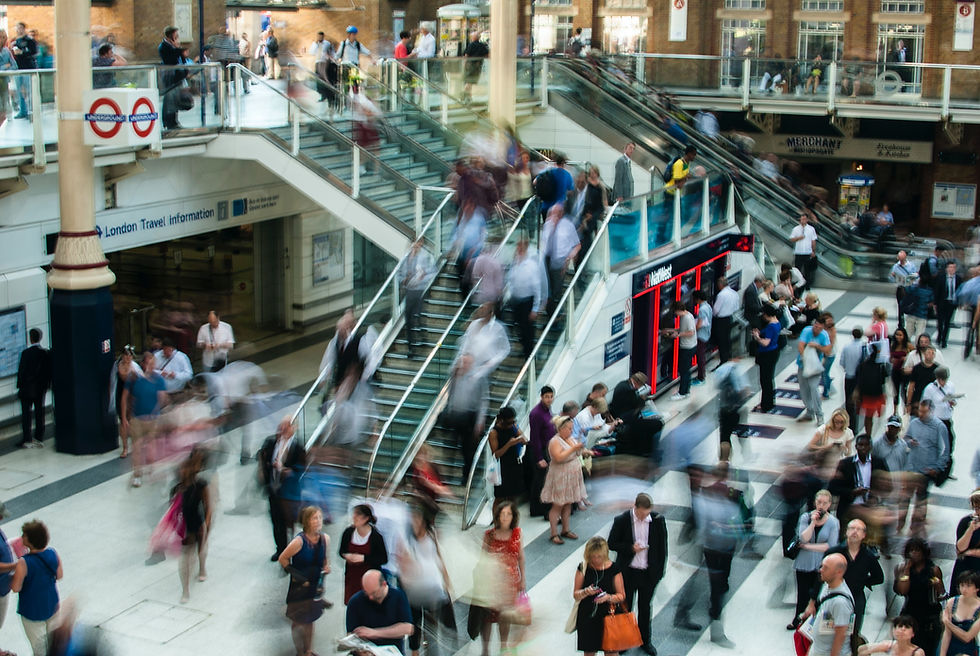How to Choose the Perfect Location for a Plasma Donation Center and Why People frequency is crucial
- Marijana Lazic
- May 19, 2023
- 3 min read
Updated: May 23, 2023
Plasma Centers financial success heavily relies on their location and the frequency of people willing to donate. In this blog, we will explore the essential factors to consider when choosing a location for a blood donation center, and why understanding people frequency is of high importance.
When it comes to choosing a location for a plasma center, there is a notable difference between establishing the first center in your city and creating yet another center among many.
While it is true that some successful plasma centers have been built in shopping malls, practical experience has demonstrated that shopping malls yield high conversion rates only in markets where plasma donation is already well-established.
By reading the entire article and subscribing to our newsletter, you can gain the assurance of making informed decisions regarding your investment in a plasma center.

Analyzing people Frequency: this is considered one of the most important factors for establishing a Plasma Center. To be productive plasma center, needs to have donors during whole day, not just after working hours. It is not uncommon for the first plasma centers to be established in the central areas of a city, where there is a significant flow of people, even if the zone itself is not densely residential. The presence of public transportation stations and easy accessibility from various parts of the city or even outside of the city are crucial factors to consider. Strategically position your Plasma Center in locations where people naturally gather and where they should not loose time to come to you.
Population Density: Considering population density is crucial when opening a blood donation center as it ensures a larger pool of potential donors in close proximity, increasing accessibility and the likelihood of consistent blood supply even during summer months. The influence of the local community is of great significance in attracting new donors (using Recommend a friend affiliate marketing), making local neighborhoods a preferred choice, especially in cities where there are already a few existing centers.
Analyzing Demographics: Understanding the demographics of an area is vital. Factors such as age distribution, cultural diversity, and socio-economic status can impact the willingness of people to donate blood. Tailoring marketing campaigns and outreach efforts to specific demographic groups can help maximize participation rates and create a more inclusive donation culture It's important to consider that, generally speaking, the majority of individuals who donate blood plasma at private plasma centers with financial compensation fall within the age range of 20 to 40 (varying depending on the specific center and country). Therefore, this particular demographic often requires a convenient location, such as nearby universities, university libraries, campuses, where they can either spend their time or easily access the plasma center. In order to have efficient plasma center, however you can not rely only on students as a one segment of your audience, because for efficiency repetitive donors who come also during summer months are important as well.
Shopping malls or Medical ambulatories as an options to consider: Shopping malls can be advantageous when located in small cities or not central middle - lower class residency neighborhoods with a high concentration of residents. USA, Germany and Czech Republic are some of the countries where successful plasma centers are located in a Shopping malls.
In every country, rules and dynamics vary, and the significance of location differs as well. The United States, being a highly competitive market with a substantial number of plasma centers, carries the highest risk of having a competitor center conveniently located nearby. However, this is not the case in emerging countries where plasma centers are just beginning to establish their presence, where location plays more important role.
Choosing the right location for a blood donation center requires careful consideration of various factors, including neighborhood suitability, public transport stations, demographics, peoples fluctuation, and community engagement. By understanding the importance of people frequency and implementing effective strategies, blood donation centers can maximize their impact, save more lives, and build a stronger, healthier community. Together, we can make a significant difference in the lives of those in need.




Comments